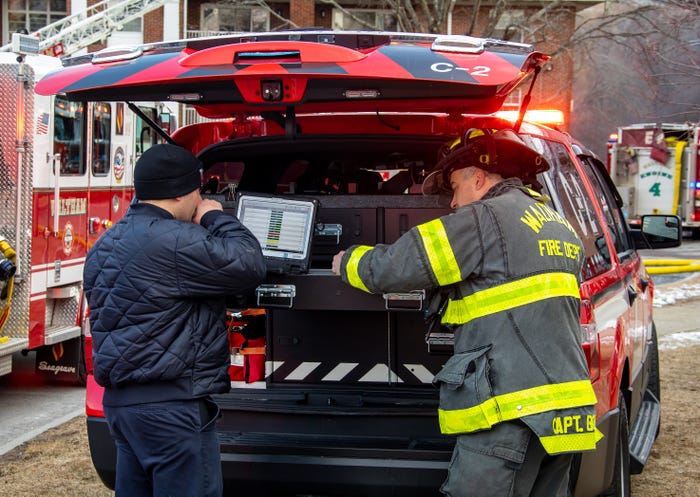FDNY deploys data-based accountability system
The system identifies the seven-digit number unique to a firefighter’s radio, translates it into a firefighter’s name and transmits the data to laptop computers mounted in fire commanders’ vehicles.
July 21, 2011
After a 90-day field test and more than one year in research and development, the New York City Fire Department has installed the the Electronic Fireground Accountability System (EFAS), a citywide, data-based accountability mayday system that more effectively pinpoints the location of firefighters and reduces radio ID confusion. The system identifies the seven-digit number unique to a firefighter’s radio, translates it into a firefighter’s name and transmits the data to laptop computers mounted in fire commanders’ vehicles, said Deputy Asst. Chief Stephen Raynis.
EFAS was piloted using a Pelican case, or ruggedized suitcase, to hold all of its components, which included a laptop, a battery, a modem and an EVDO card to access the Internet. Now, the data is housed on mobile-data transmitters, or the laptop computers, in the fire apparatus that also displays alarm information.
“So instead of this portable unit, we were able to convince people in our Bureau of Technology and Development that it was not going to interfere with any alarms coming in,” Raynis said.
The $750,000 investment replaces an antiqued system that used message codes displayed on an LCD screen, which disappeared when another radio was keyed. Raynis said that with all of the different companies and units, those numbers got confusing. To make matters worse, when someone else keyed their microphone, the number would disappear and the new number would appear.
Now, EFAS runs in the background of the laptop and only alarm information displays. When a truck arrives on scene, an incident commander switches the computer software from the alarm mode to the EFAS mode via a button on the bottom of the screen. Then, firefighters send a mayday by pressing an emergency alert button on a handheld radio or on a remote microphone clipped to firefighters’ chests, and it is viewed on the laptop, Raynis said.
While chiefs to division firefighters currently monitor the EFAS for mayday calls, the FDNY is working on a protocol to assign responsibility to a specific team.
“Right now we are in transition as far as who is going to monitor that at all times,” he said.
Raynis added that chiefs must think big when it comes to technology.
“It just needs to be developed and investigated,” he said. “We wanted to make it better and safer for firefighters. With some research and leg-work, we were able to come up with a program that works.”



